7 Must Have HR Policies for Call Centers
In this article, you will learn about HR Policies for Call Centers: Essential guidelines for recruitment, training, performance, and more for call centers with 51-500 employees. Stay compliant and productive.
5 min read
Introduction
HR Policies for Call Centers are essential for ensuring a productive and compliant work environment. In today’s fast-paced and competitive landscape in call centers, well-structured HR policies make a significant difference in managing workforce efficiently.
HR policies not only protect the interests of employees but also ensure alignment with organizational goals, legal requirements, and industry standards.
Imagine a bustling call center without clearly defined HR policies; it would be chaotic, wouldn’t it? Issues ranging from employee dissatisfaction to compliance breaches could arise, potentially resulting in a tarnished reputation and financial losses.
For call centers, which operate under high-pressure environments, having concrete HR policies can determine success or failure. These policies set the stage for everything from recruitment, performance management, employee engagement, compliance, and beyond.
A strategic focus on HR policies also enhances employee satisfaction and retention, which is crucial in an industry where turnover rates can be notoriously high.
In the following sections, we will delve into seven must-have HR policies for call centers, bringing together research, statistics, and practical insights to help you refine and implement these policies.
Whether you are a CXO, HR manager, or operations manager, this comprehensive guide aims to equip you with the knowledge and tools to create an efficient, compliant, and engaging workplace for your employees.
1. Recruitment and Selection Policy
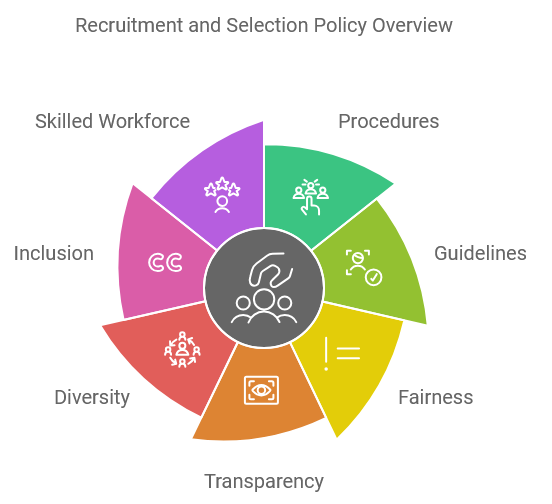
An effective Recruitment and Selection Policy is foundational for call centers. This policy should outline the processes and standards related to the hiring of new employees, making sure the organization attracts qualified and competent talent, which is crucial in maintaining service quality.
Creating a comprehensive job description is the first step. It should clearly define the roles, responsibilities, and required qualifications. According to a study by Glassdoor, organizations with a strong onboarding process improve new hire retention by 82% and productivity by over 70%.
Ensure a structured interview process. Use standardized questions to evaluate candidates fairly and consistently. Incorporate pre-employment assessments that measure relevant skills such as communication, problem-solving, and technical aptitude.
Background checks are crucial for ensuring the safety and reliability of new hires. They help in mitigating risks associated with fraud or poor performance.
Pro Tip
Utilize AI-driven recruitment tools to streamline candidate screening, which can save time and reduce human biases in the selection process.
2. Training and Development Policy
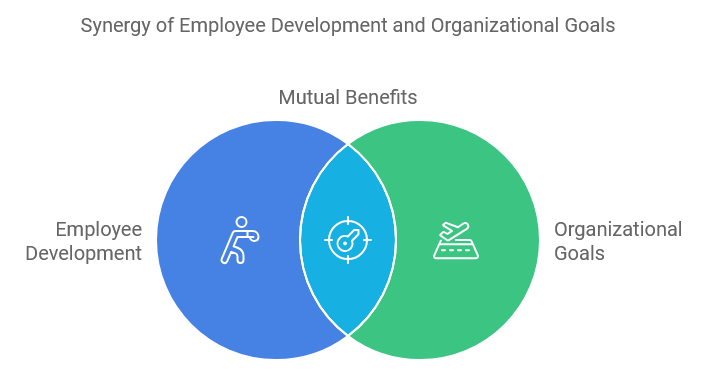
A robust Training and Development Policy helps in enhancing the skills and competencies of employees, which is critical for maintaining high service standards. According to LinkedIn’s 2021 Workplace Learning Report, 94% of employees would stay at a company longer if it invested in their learning and development.
Develop a comprehensive onboarding program. This program should cover company policies, product/service training, and customer interaction protocols.
Regular skill assessment and continuous training sessions can help keep employees updated with the latest trends and technologies in the industry.
Encourage self-paced learning by providing access to online training modules, webinars, and industry certifications. This not only enhances skills but also boosts employee morale and job satisfaction.
Pro Tip
Establish a mentorship program where experienced employees can guide new hires, share knowledge, and provide career development advice.
3. Performance Management Policy
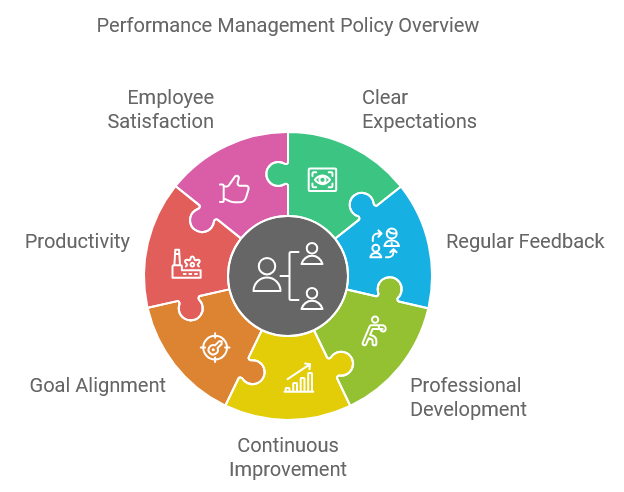
A well-defined Performance Management Policy ensures that employees’ efforts align with the organization’s goals. It provides a structured approach to setting goals, monitoring performance, providing feedback, and recognizing achievements.
Set clear and measurable performance goals. Use SMART criteria (Specific, Measurable, Achievable, Relevant, Time-bound) to define targets.
Implement regular performance reviews. These can be monthly, quarterly, or annual assessments that provide insights into an employee’s progress and areas for improvement.
According to a study by Gallup, employees who receive regular feedback are 3.6 times more likely to be engaged at work.
Recognition and reward programs are essential for motivating employees. Simple gestures such as ‘Employee of the Month’ awards, bonuses, and public recognition can significantly boost morale.
Pro Tip
Use performance management software to track employee achievements, provide real-time feedback, and streamline the review process.
4. Employee Engagement Policy
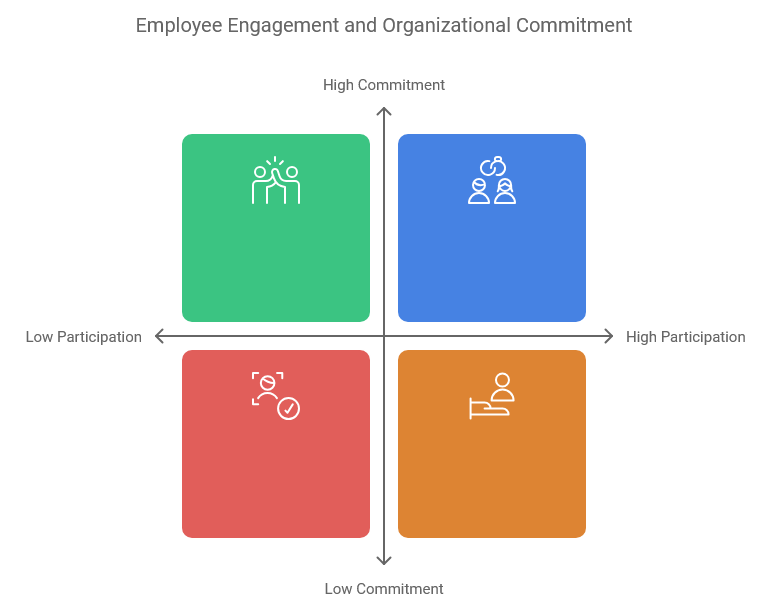
Employee engagement is vital for creating a motivated and committed workforce. A comprehensive Employee Engagement Policy can significantly reduce turnover rates and increase productivity. According to a study by Gallup, highly engaged teams show 21% greater profitability.
Foster transparent communication. Regular town hall meetings, suggestion boxes, and open-door policies can enhance trust and openness within the organization.
Encourage work-life balance. Flexible working hours, remote work options, and wellness programs can significantly enhance job satisfaction.
Organize team-building activities. These activities can foster camaraderie and improve teamwork. Examples include company outings, team lunches, and collaborative projects.
Pro Tip
Conduct regular employee engagement surveys to gauge the satisfaction levels and identify areas for improvement.
5. Compliance and Legal Policy
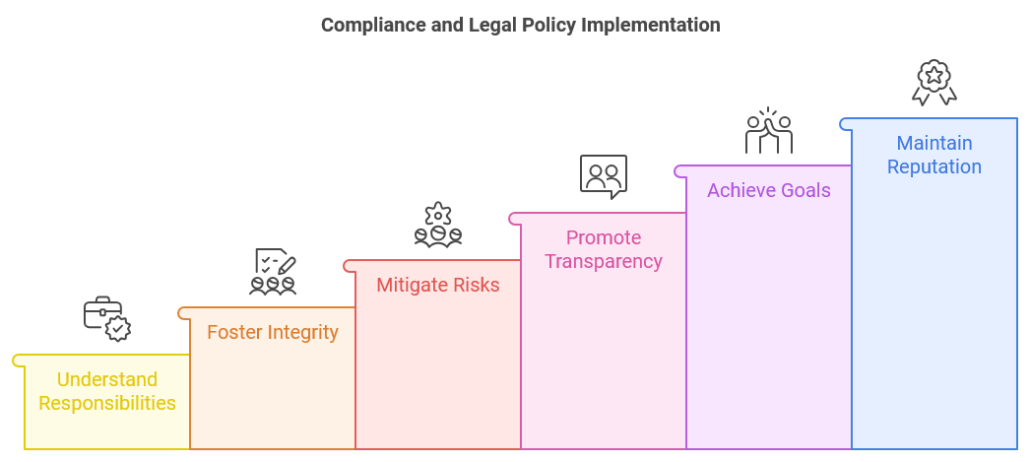
Compliance with legal and regulatory requirements is non-negotiable. A clear Compliance and Legal Policy ensures the organization adheres to labor laws, industry regulations, and ethical standards.
Stay updated with labor laws and industry regulations. Regularly review and update policies to ensure compliance with changing laws.
Implement a zero-tolerance policy for workplace harassment and discrimination. Provide regular training to employees on these policies to foster a safe and respectful work environment.
Data privacy and security are paramount in call centers. Ensure compliance with data protection laws such as GDPR, and provide regular training on data handling and privacy practices.
Pro Tip
Establish a compliance committee to monitor adherence to policies and address any legal or regulatory concerns proactively.
6. Attendance and Leave Policy
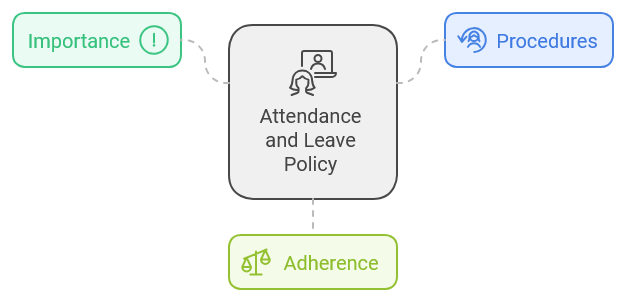
An effective Attendance and Leave Policy helps in managing employee availability and ensuring work continuity. It sets clear guidelines for attendance, leave entitlements, and procedures for leaves of absence.
Define attendance expectations clearly. Use attendance tracking systems to monitor employee punctuality and presence.
Provide detailed information on leave entitlements. Include vacation, sick leave, maternity/paternity leave, and any other specific leave types relevant to your organization.
Implement a transparent leave approval process. Ensure consistency and fairness in granting leaves to avoid dissatisfaction and disputes.
Use a robust call center time tracking software for monitoring attendance and tracking time off requests.
Pro Tip
Use leave management software to automate and streamline the leave application and approval process, making it convenient for both employees and managers.
7. Health and Safety Policy
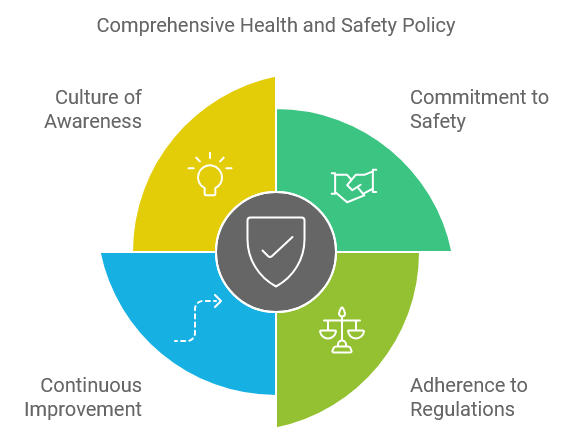
Ensuring the health and safety of employees is a fundamental responsibility of any organization. A robust Health and Safety Policy can prevent workplace accidents and promote a healthy work environment.
Conduct regular risk assessments to identify potential hazards and implement measures to mitigate them.
Provide safety training to employees. Ensure they are aware of emergency procedures, first aid, and safety protocols.
Promote a healthy work environment. Encourage ergonomic workstations, regular breaks, and wellness programs to enhance physical and mental well-being.
Pro Tip
Establish a health and safety committee to monitor workplace conditions, address safety concerns, and promote a culture of safety awareness.
Conclusion
HR Policies for Call Centers are not just guidelines but the backbone of a well-functioning organization. Implementing these seven key policies—Recruitment and Selection, Training and Development, Performance Management, Employee Engagement, Compliance and Legal, Attendance and Leave, and Health and Safety—can help you build a resilient, compliant, and productive workforce.
By focusing on these critical areas, you can create a work environment that not only meets regulatory requirements but also fosters employee satisfaction, engagement, and productivity. Remember, a well-structured HR policy framework is an investment in your organization’s future success.
Pro Tip
Regularly review and update your HR policies to stay aligned with industry best practices and evolving workforce dynamics. This will ensure that your call center remains competitive and compliant with the ever-changing regulatory landscape.
Start transformation of your call center today!
Say hello to productivity, accuracy, and profitable growth. Streamline your call center operations with HiveDesk.

